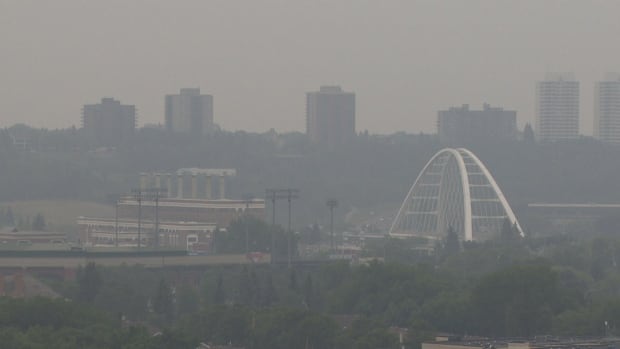
Edmonton study finds link between air pollution and substance use disorder
CBC
A recently published study that analyzed air quality and tens of thousands of emergency department visits in Edmonton found a link between polluted air and increased hospital admissions for substance use disorders.
The study, published in the peer-reviewed journal Air Quality, Atmosphere & Health on March 18, used air pollutant data from Canada's National Air Pollution Surveillance program, weather data from Environment Canada and emergency department visit data from the University of Alberta Hospital, the Royal Alexandra Hospital, the Grey Nuns Community Hospital, the Misericordia Community Hospital and the Sturgeon Community Hospital.
Studying the period between April 1, 1998, and March 31, 2002, Mieczysław Szyszkowicz of Health Canada's Environmental Health Science and Research Bureau found that patients who had been exposed to carbon monoxide, nitrogen dioxide and particulate matter were more likely to visit emergency rooms for substance use disorders.
"While few studies in the literature currently report on the impacts of air pollution on substance abuse, there is a growing body of evidence that exposure to air pollution affects the brain and can alter behaviour," he wrote in the article.
Szyszkowicz's study re-analyzed data from a previous one published in 2018, that had similar findings.
"We know that poor air quality has been associated with not just stroke and neuroscientific problems, but also behavioural problems such as mental health and addiction, and so the idea is that the brain is particularly susceptible to poor air quality," said Dr. Brian Rowe, a professor in the department of emergency medicine at the U of A.
Rowe worked with Szyszkowicz on the 2018 study and is the scientific director for the Institute of Circulatory and Respiratory Health.
Scientists don't fully understand how air pollution affects the brain, but some theorize pollution could cause changes to it, affecting people's mental health and ability to cope with conditions like depression.
Some experimental animal studies have shown that mice exposed to polluted air showed signs of depression and were more likely to seek immediate rewards and a recent study found healthy people who were genetically susceptible to depression and exposed to air pollution had more stress-related effects on their brain circuitry.
Calculating a population's exposure to air pollution can be difficult since some pollutants are not measured, some people live closer to air monitoring stations than others and pollution exposure can vary within neighbourhoods.
Someone who lives beside Whitemud Drive in Edmonton, for example, may be exposed to more traffic pollution than someone a little further away.
There are also limitations with the data hospitals collect, since researchers may know the age and sex of patients but not other factors like marital status or smoking.
"Nothing's perfect, and these are associations, but they're consistent associations," Rowe said.
Dr. Alvaro Osornio-Vargas, a professor in the U of A's pediatrics department who is part of the Children's Environmental Health Clinic, said these kinds of associations can help scientists identify questions to explore with more precise methodologies.





















 Run 3 Space | Play Space Running Game
Run 3 Space | Play Space Running Game Traffic Jam 3D | Online Racing Game
Traffic Jam 3D | Online Racing Game Duck Hunt | Play Old Classic Game
Duck Hunt | Play Old Classic Game











